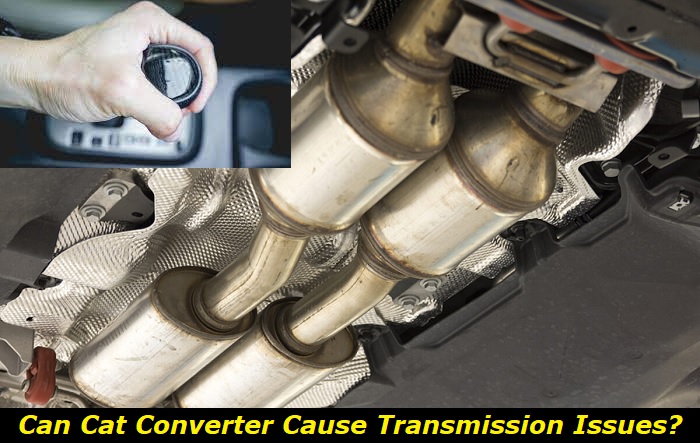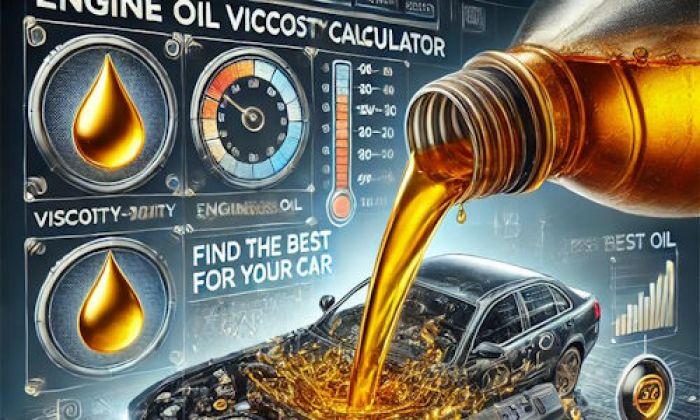The catalytic converter and the transmission are two distinct parts of the vehicle that seem to have no connection at all. That's because one belongs in the exhaust system of the auto while the other is in the transmission system.
However, some of you may be surprised to learn that a bad catalytic converter may have a negative effect on the transmission, too. In this article, we will try to establish a connection between the two different elements of a vehicle.

What You'll Find Here
This article shall take a step-by-step process to provide a link between the catalytic converter and the transmission. In doing so, it shall tackle these topics:
- How the Catalytic Converter Works
To provide a quick background on the function of this part of the exhaust system as well as the problems that may happen in it.
- How the Transmission Works
To offer a quick look at the operation of the transmission as well as a brief discussion of the problems that usually plague it.
- Bridging the Connection Between the Catalytic Converter and the Transmission
Finally shows how the two sometimes intermingle directly or indirectly at certain events.
How the Catalytic Converter Works
The catalytic converter is an essential part of a vehicle's emissions control system. It works by converting toxic gases from the exhaust into harmless compounds before they are released into the atmosphere. It consists of a ceramic or metallic monolith that is coated with a special catalyst material, usually palladium and/or platinum, to facilitate the chemical reaction that takes place inside it.
When there are problems with the catalytic converter, it can cause several symptoms including decreased fuel efficiency, increased engine idle speed, and sounds such as rattling that comes from under the vehicle. In some cases, the Check Engine Light may also be activated due to an issue with this component.
To assess whether or not there is a problem, manual checks should be done to ensure the mounting bolts are tight and the converter is not blocked with debris. Additional diagnostic tests can be done using specialized tools, such as an OBD-II scanner.
When it comes to repairing or replacing a faulty catalytic converter, affected parts may include oxygen sensors, spark plugs, exhaust manifolds, and gaskets. Additionally, if excessive back pressure is present in the system due to a clogged converter, all of these components should also be checked for any signs of damage or wear.
To conclude this process, aftermarket catalytic converters must meet strict standards before they can be used in place of original equipment units. Consequently, it is important that premium quality parts are sourced when performing repairs on this crucial component.
As such, it is important to be aware of the potential problems that can occur with a catalytic converter and how to assess them. By doing manual checks and utilizing specialized tools, it will be possible to determine whether or not there is an issue and which parts may need to be replaced.
Additionally, when sourcing aftermarket components, it is essential to make sure they meet strict standards in order to guarantee the safety and efficiency of the vehicle's emissions control system.
How the Transmission Works
The transmission system is an important component of a vehicle, encompassing the gears and shafts that allow it to move. It consists of several parts such as the clutch plate, flywheel, pressure plate, synchronizers, shift forks, and differential. The transmission transfers power from the engine to the wheels for movement. When problems arise in this system, it can cause a variety of issues such as difficulty shifting gears or jerky acceleration.
When diagnosing a transmission issue on a car, you should look for signs like slipping between gears, delays when engaging into gear after starting up the engine, or revving higher than usual before going into gear. In some cases, there may be noise coming from inside or outside of the vehicle when shifting gears.
You should also look for signs of fluid leakage which may indicate a faulty seal or gasket. Manual checks such as checking the transmission fluid levels and making sure they are full can help identify potential problems. In some cases, diagnostic tools like a scanning tool or code reader may be needed to properly assess the source of the problem.
Once you have identified the cause of the transmission issue, you will need to determine what needs to be done to resolve it. This could include replacing any damaged or worn-out parts such as pressure plates, flywheels, clutch plates, seals, synchronizers, shift forks, or differential components.
Other steps might include changing fluids and filters or adjusting cable ends and linkage points. Depending on the specific issue, a professional mechanic may be needed to help perform the repairs. In extreme cases, complete transmission replacement might be necessary.
When dealing with a transmission issue, it is important to properly identify the source of the problem and assess what parts need to be replaced in order to resolve it. By doing so, you can ensure that your vehicle will run smoothly and safely for years to come.
Bridging the Connection Between the Catalytic Converter and the Transmission
Surprisingly, problems in the catalytic converter can, directly and indirectly, affect the transmission in some way, too. A bad catalytic converter can have serious consequences on the health and functioning of a vehicle's transmission components.
This is because the catalytic converter helps control the levels of combustion byproducts that are produced during an engine cycle. When there are issues with the catalytic converter, these combustion byproducts increase, which can cause excessive heat build-up that may crawl up to the parts of the transmission system. The increased heat can cause damage to internal components, such as seals and gaskets, resulting in transmission slippage or leakage.
Additionally, deposits may form on critical parts within the transmission due to improper burning of fuel or deposits seeping from the faulty catalytic converter. These deposits will lead to wear and tear over time and premature deterioration of the transmission system.
Likewise, clogging in the catalytic converter can also hinder the engine from working efficiently, especially if the vehicle's onboard computer forces it to go on limp mode. So, as the engine struggles to perform effectively, so is the transmission. This can cause transmission issues, such as increased noise levels, pressure plate failure, and clutch slippage.
The most common causes of issues with the catalytic converter which can lead to transmission problems include a clogged or improperly functioning converter. This is usually due to an accumulation of debris and other materials within the unit itself, such as rust, dirt, and sludge.
Moreover, a worn-out oxygen sensor can cause problems in the catalytic converter and subsequent transmission issues if it fails to accurately read the levels of oxygen in the exhaust gases. Another potential issue is incorrect installation.
If a catalytic converter is not properly fitted then it will not be able to perform its job correctly, leading to an overabundance of combustion byproducts entering the system. Ultimately, any problem that affects the functioning of the catalytic converter can have a drastic impact on the transmission system.
It is therefore important to pay attention to any signs of trouble with your catalytic converter, such as increased engine noise, poor fuel economy, or a rotten egg smell coming from the exhaust. If any of these symptoms are present, it is best to have your vehicle checked for any potential issues with the catalytic converter as soon as possible.
Doing so can help you avoid costly repairs that result from transmission problems caused by a faulty catalytic converter.
It is also important to provide regular maintenance and servicing of your vehicle to keep the catalytic converter and transmission functioning properly. This includes checking fluid levels and replacing worn-out parts on time.
Regularly cleaning out the catalyst housing can help prevent blockages and the buildup of debris which can lead to transmission trouble down the line. Following these simple steps can go a long way in ensuring the smooth and reliable performance of your vehicle's transmission system.
By keeping an eye on the health and functioning of your catalytic converter, you can help avoid costly problems with your car's transmission as well. It is essential to take preventive measures in order to keep both systems running optimally so that you don't have to worry about expensive repairs or replacements.
With careful attention and regular maintenance, you can keep your car running smoothly for many years to come.
Conclusion
As shown here, it is important to remember that any issue with the catalytic converter can have serious consequences on the functions of a vehicle's transmission. Regular preventive measures should be taken in order to ensure optimal performance of both the catalytic converter and the transmission system.
Paying attention to signs of trouble such as increased engine noise or poor fuel economy, and having any potential issues checked out by a qualified technician are essential steps in keeping your car running smoothly and avoiding costly repairs.
Taking these precautions can help you save money while ensuring reliable performance from your car's exhaust and transmission systems.
About the authors
The CarAraC research team is composed of seasoned auto mechanics and automotive industry professionals, including individuals with advanced degrees and certifications in their field. Our team members boast prestigious credentials, reflecting their extensive knowledge and skills. These qualifications include: IMI: Institute of the Motor Industry, ASE-Certified Master Automobile Technicians; Coventry University, Graduate of MA in Automotive Journalism; Politecnico di Torino, Italy, MS Automotive Engineering; Ss. Cyril and Methodius University in Skopje, Mechanical University in Skopje; TOC Automotive College; DHA Suffa University, Department of Mechanical Engineering






Add comment